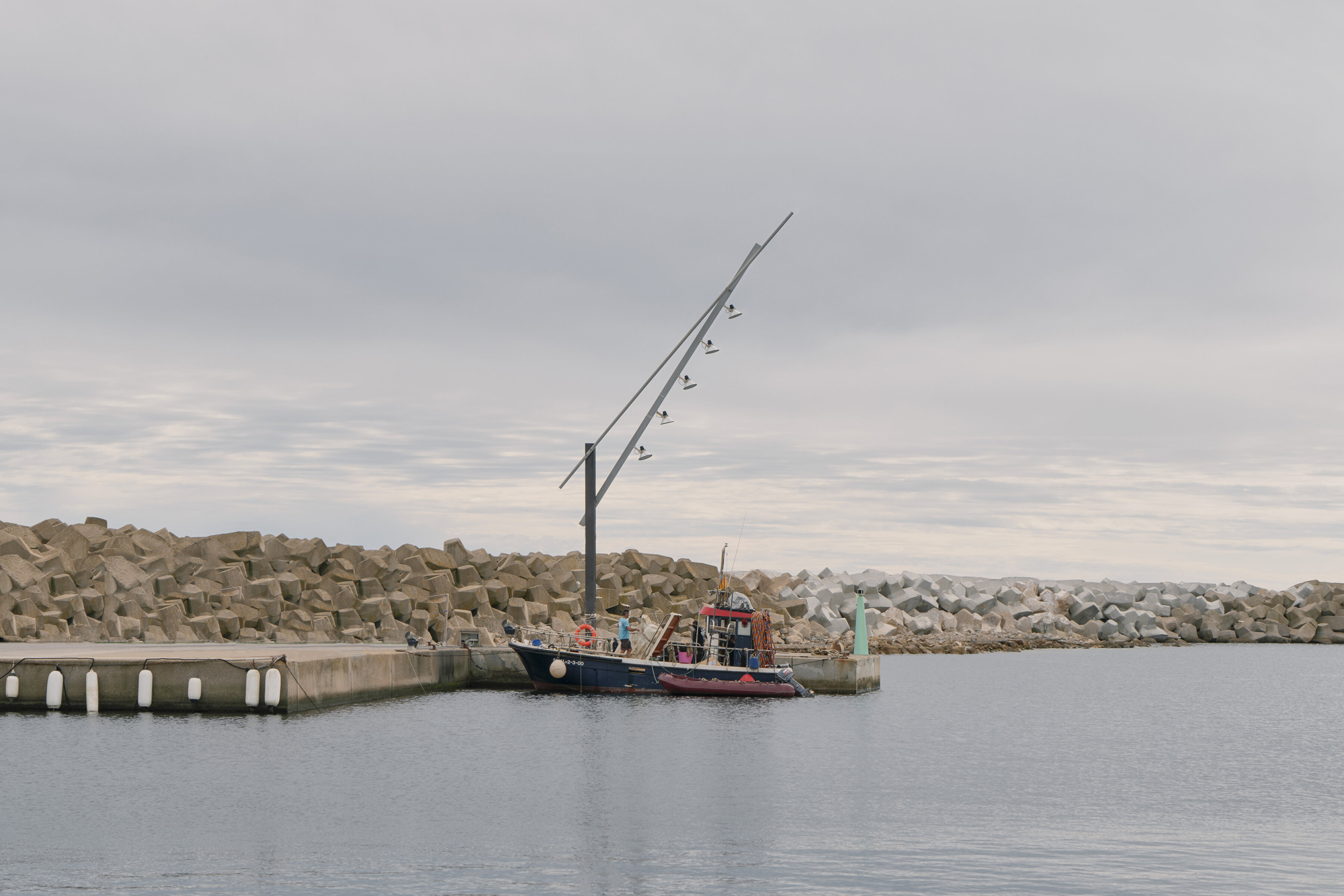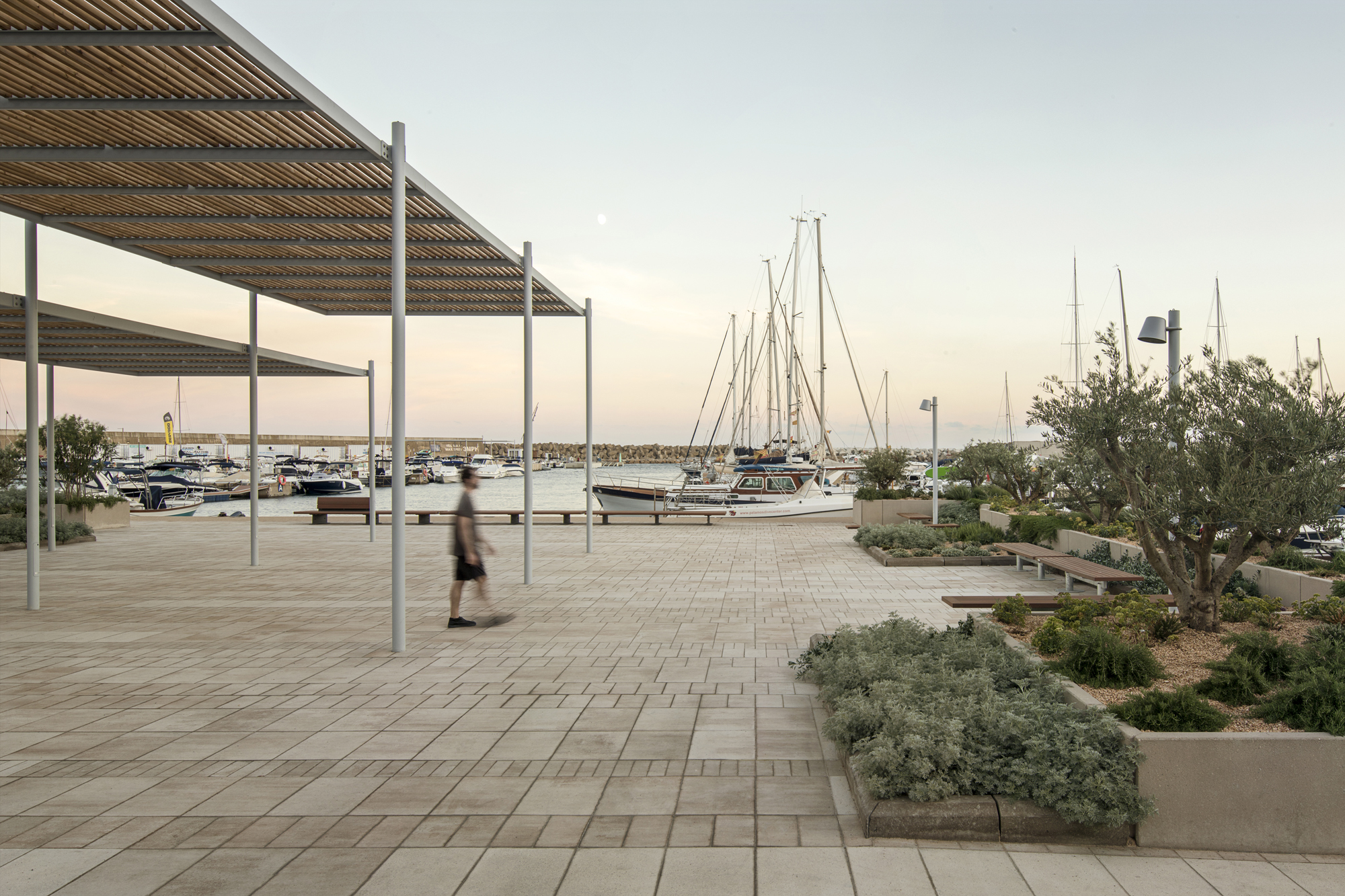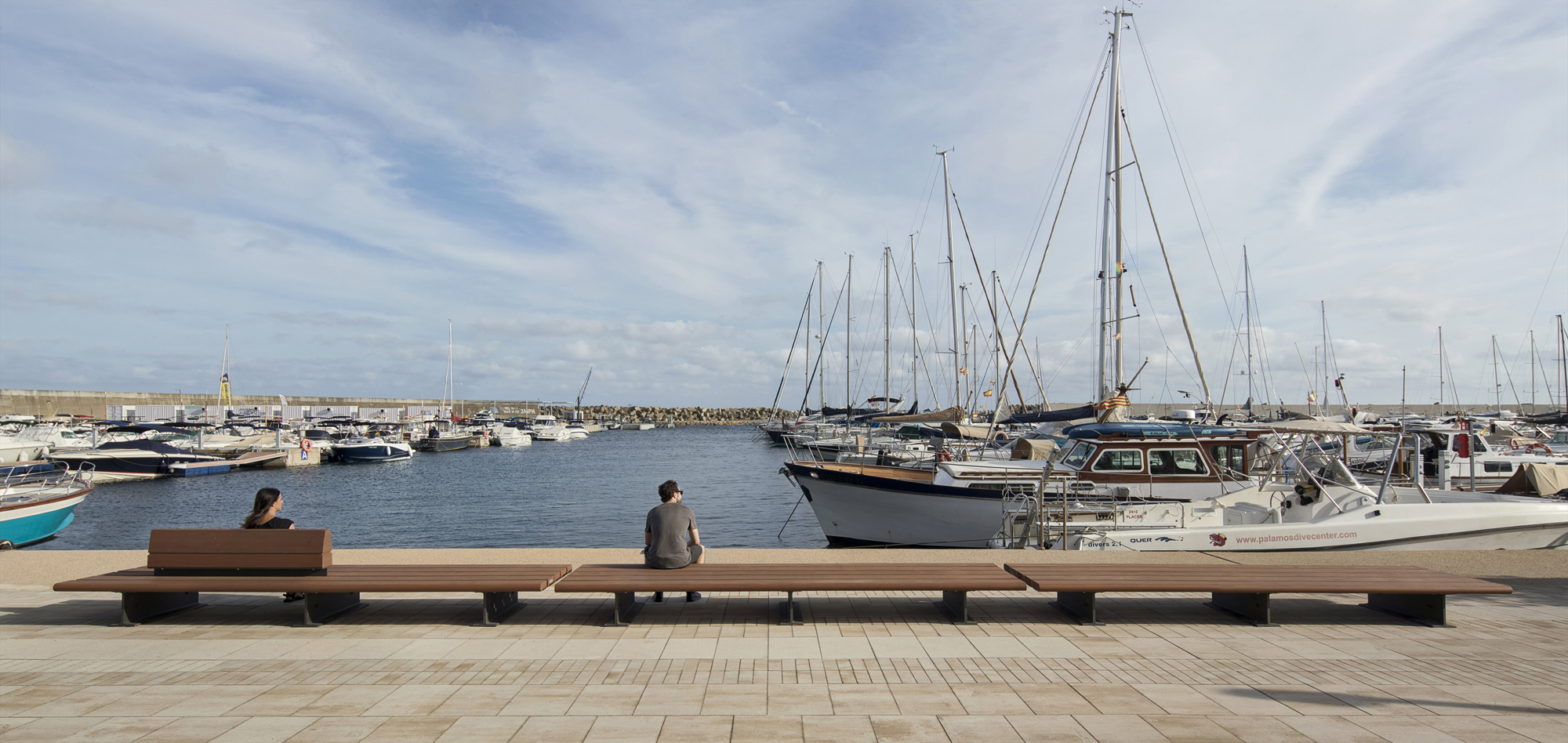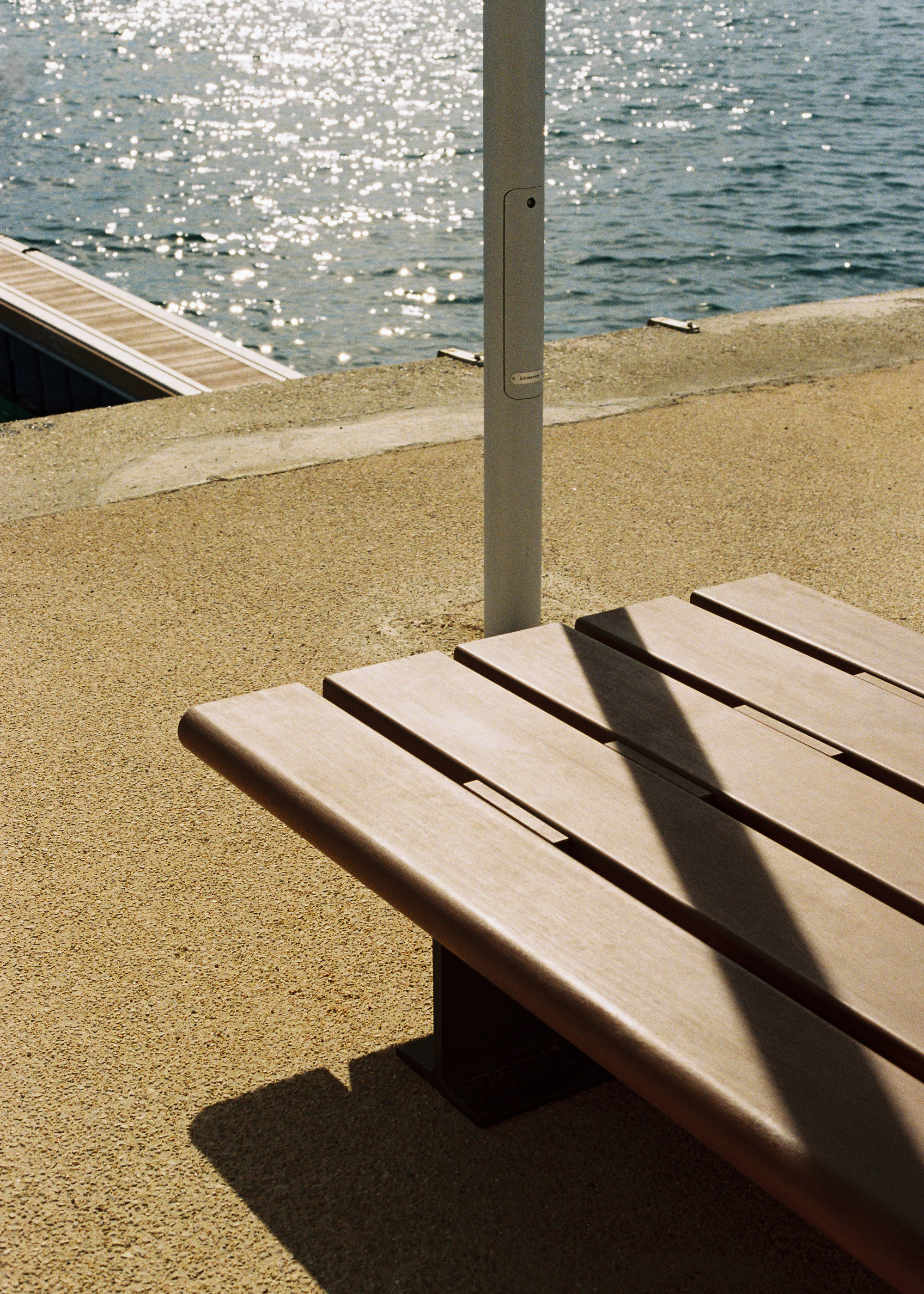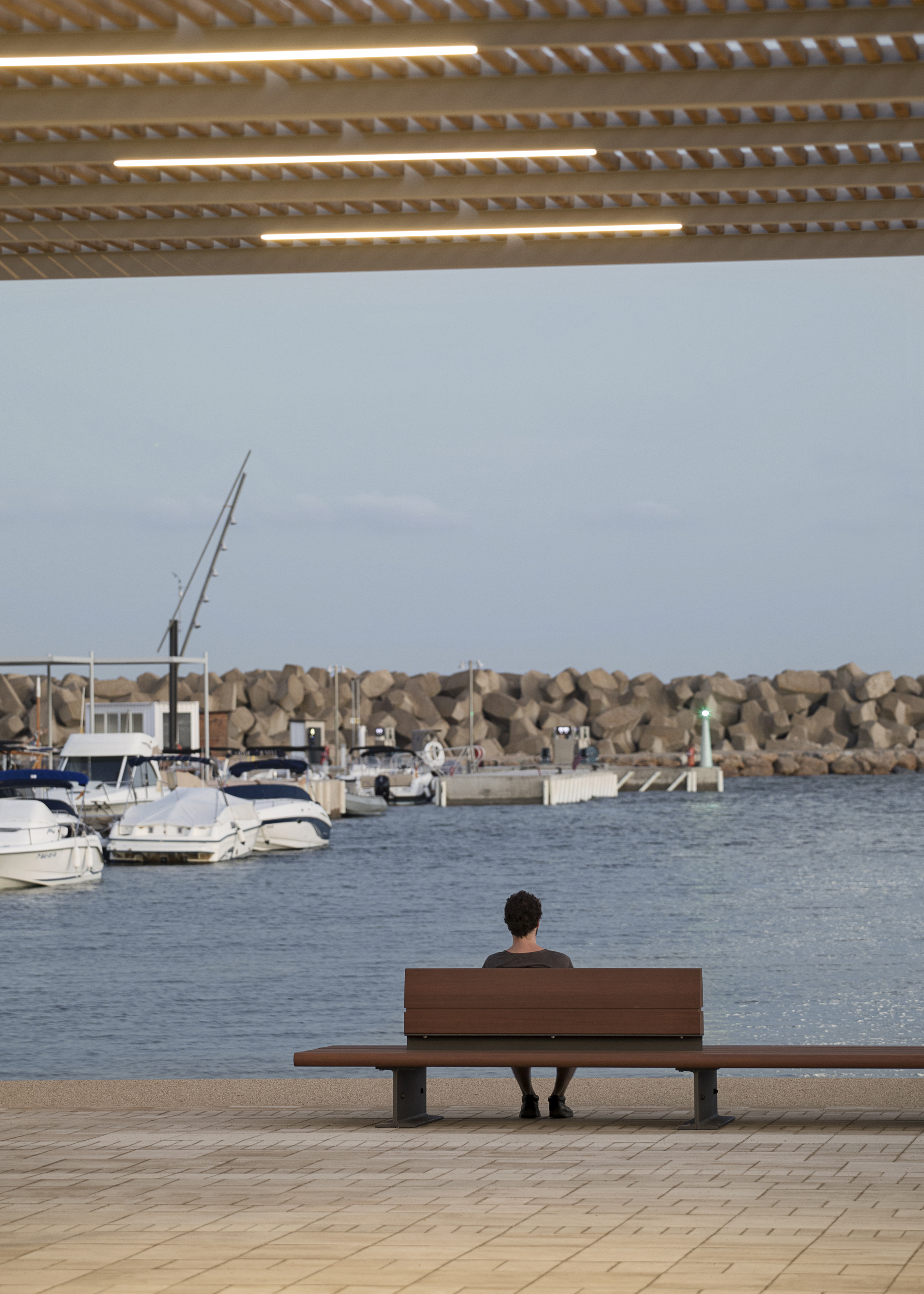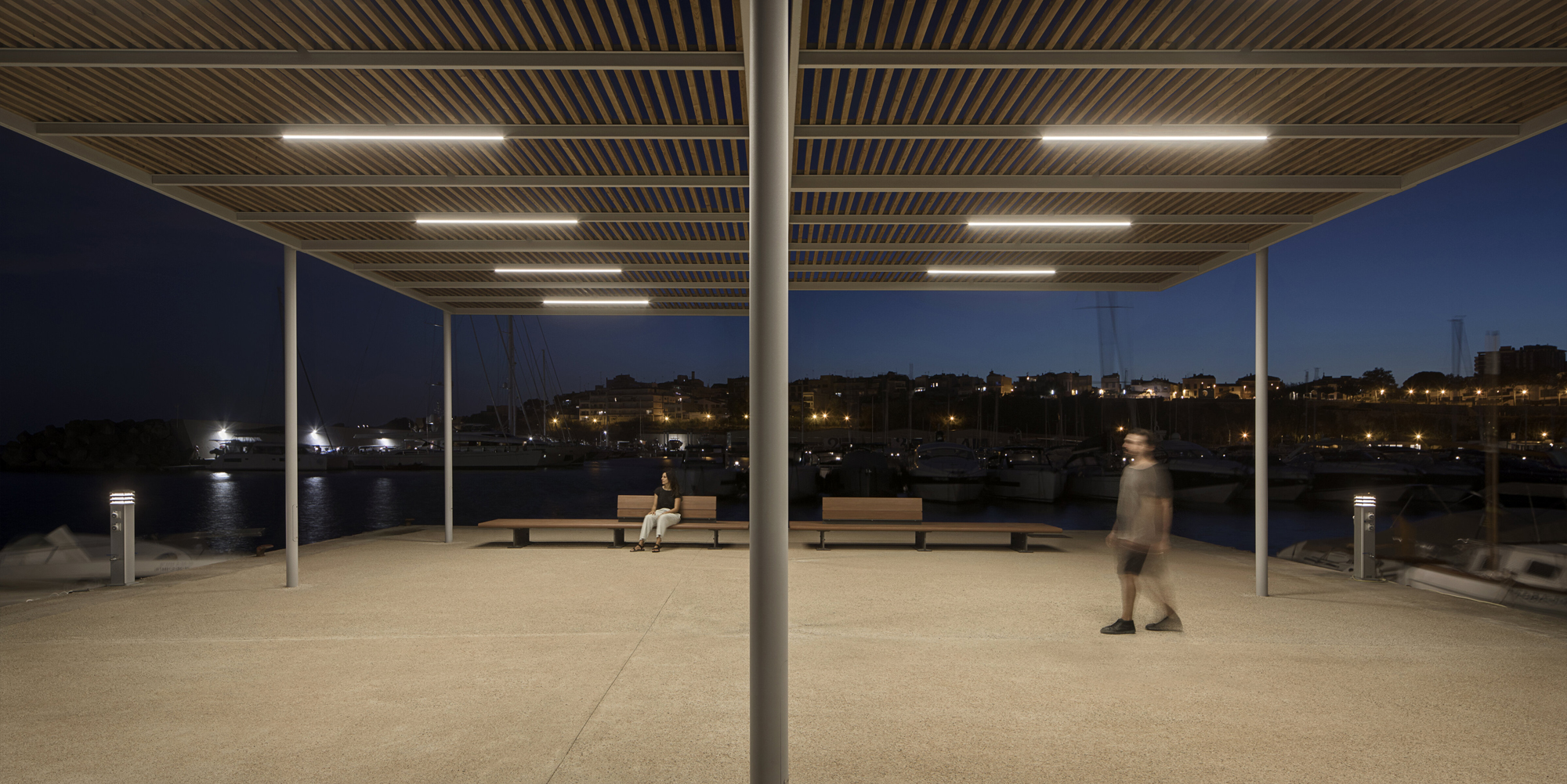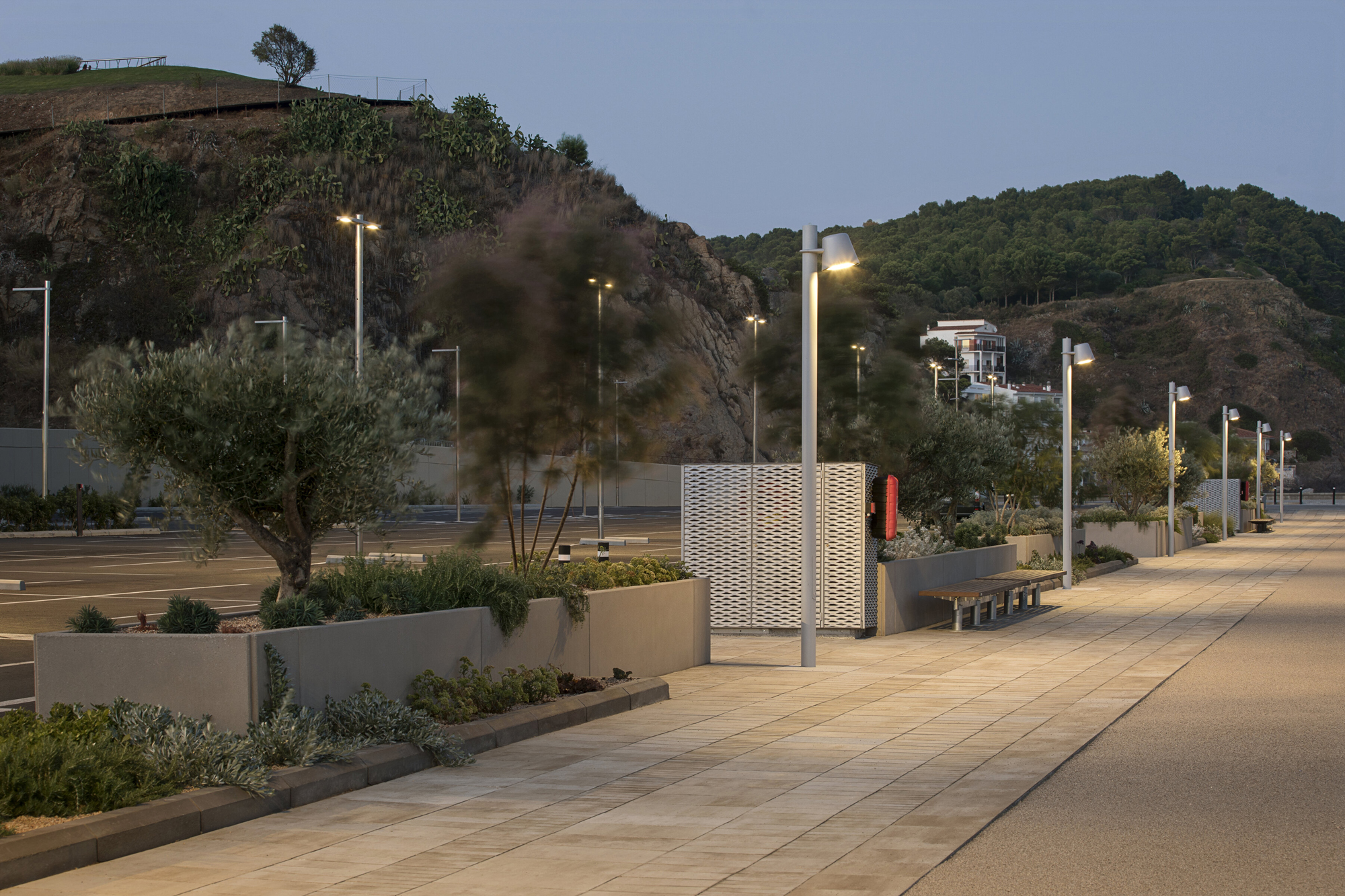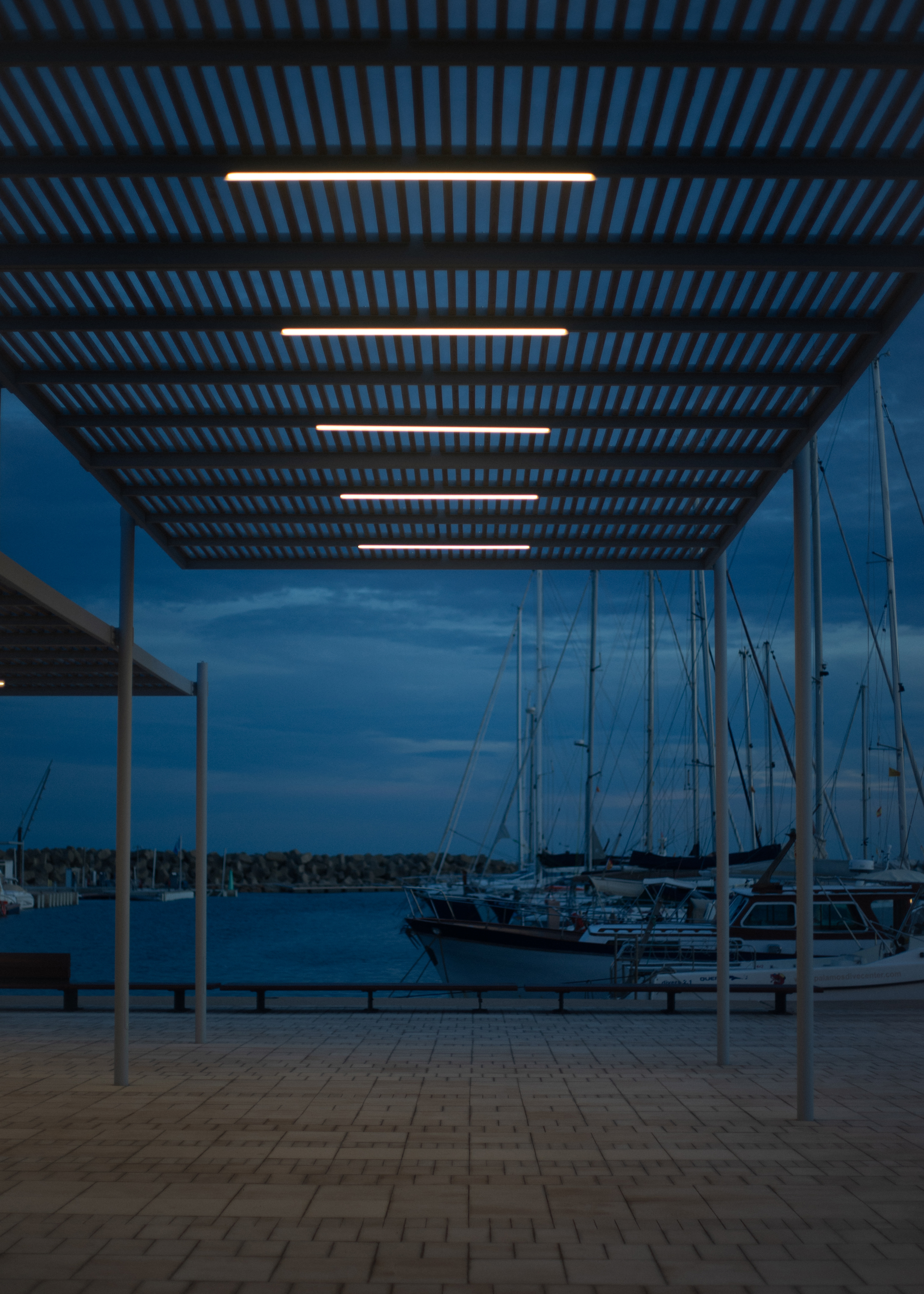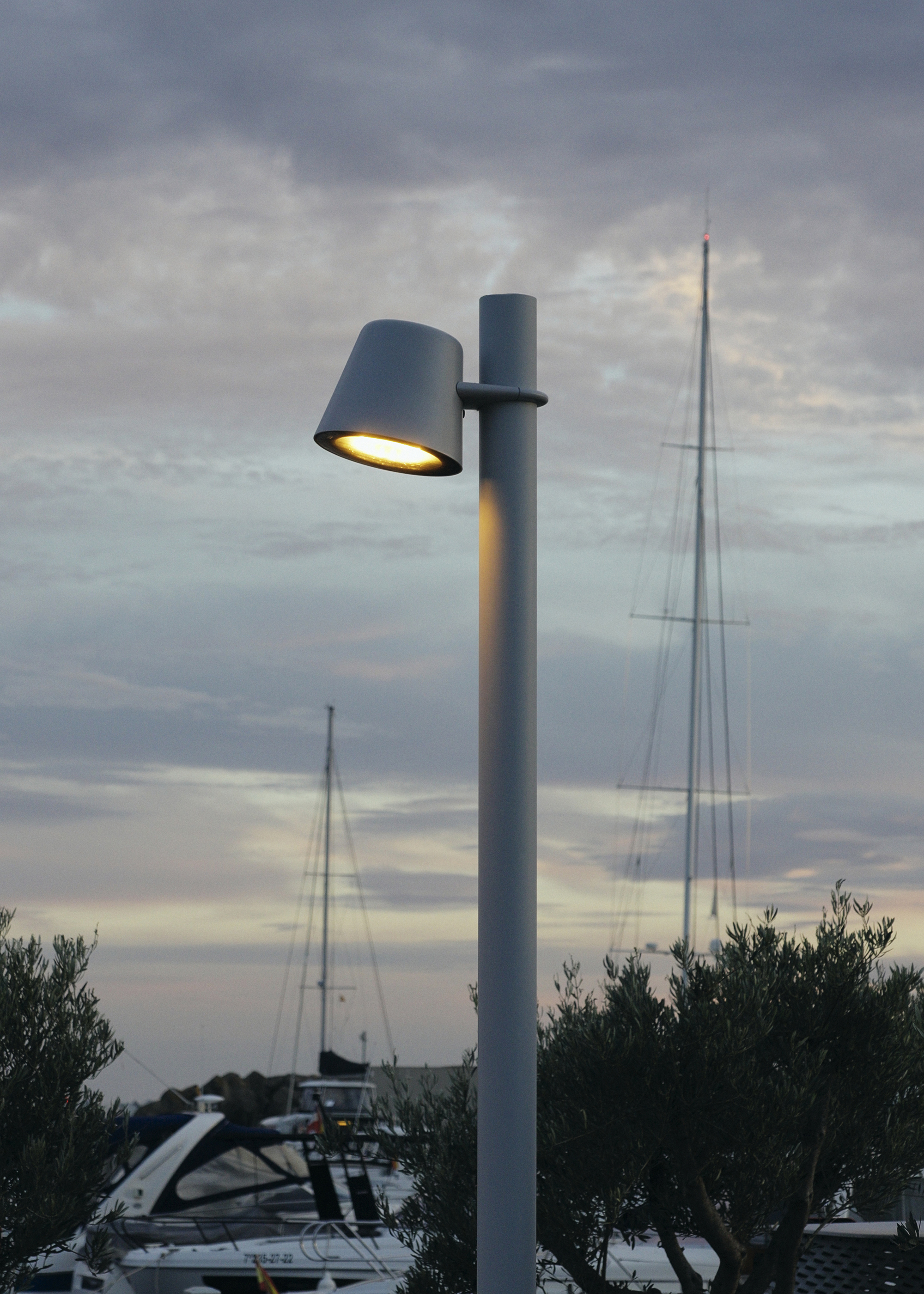The revitalization of Marina Palamós
Previously renovated in 2005, Marina Palamós is undergoing a profound and ambitious transformation, aimed at considerably enriching the port’s coastal heritage and the quality of its landscape. A project that is designed to improve livability, with spaces that are more shaded, comfortable and wrapped in green. Urbidermis is diving into the project, providing a holistic perspective that addresses lighting, furniture, microarchitecture and vegetation.
The history of Palamós
Palamós is a seaside town in Baix Empordà, Girona, located on the Costa Brava. Its historical origins date between 2100 and 1500 BC, with the first evidence of human settlements in the Dolmen de Montagut and, subsequently, in the Iberian Town of Castell.
The territory was acquired by King Pedro el Grande (III of Aragón) in 1277. He named Palamós a Royal Port, and supported both town life and local management in matters of collective interest Since then, the town’s status as a strategic port has made it a prominent location. However, it did not become full urbanized until the 19th century, due to slow economic and demographic growth.
The construction of the town’s first port dock dates from the 15th century, and it was at the end of the 19th century that a new infrastructure was launched to meet the commercial and shipping needs of the time. The port gave meaning to the birth of Palamós and guided its development. As a witness to great events, it tells stories about the long fishing tradition and dynamic maritime and commercial activities.
The Marina Palamós, situated on the east side of the lighthouse at Molino point, half a kilometer from the urban center, is one of two ports that this coastal area has today. Founded in 1992, the complex has capacity for 866 berths and a wide range of activities and services in this unique corner of the Mediterranean coast.
The first transformation of the marina
In 2005, initial comprehensive work was undertaken on the marina’s facilities, tackling, on the one hand, its functional optimization and, on the other, the start of the restoration of the landscape of the space. For this purpose, the team from the then Santa & Cole Urban Department, now Urbidermis, in close collaboration with the port’s management, developed an attractive project that was respectful both of the surroundings and the environment. It included elements of a high aesthetic quality, and the design of a serene, non-invasive lighting scene.
The warmth of the Latina streetlights for land and sea entrances. In the shape of a sail, it is a powerful, functional piece that evokes the traditional cranes seen at industrial ports. Inside the enclosure, the light points used belong to the Rama family of streetlights, which is an effective solution for minimizing light pollution. In the design of the lighting, special attention was paid not only to taking care of the quantitative parameters, but also the qualitative ones, placing luminaires strategically in order to guarantee an optimum light environment.
For a location at the seafront, Nu urban benches were selected, as they offer a comfortable rest or waiting space next to the mooring jetty. The renovation of the lighting and furniture was finished off with organization of the space and use of the commercial and service premises. This made the restoration of the public space on land a reality, resulting in the overall satisfaction of users and inhabitants.
The new approach to shared use
Marina Palamós, protected by the characteristic rocky landscape of the Costa Brava and a strategic location, has a high potential for civic attraction and service proposal for the town. However, its previous configuration did not encourage a neighborhood approach, beyond the nautical users themselves. Factors such as the rough topography of the area, the lack of continuity of the promenade, or the architecture of the port, made it difficult to open it up and make it universally accessible.
The contemporary port project
In response to this problem, in 2022, the project designed and executed by the Martí Franch studio, together with Esteyco engineering and the collaboration of Urbidermis, proposes a second comprehensive transformation, continuing the path that was begun in 2005. The remodeling of the marina urbanization, within the framework of a set of multidisciplinary adaptation and modernization works, responds to a change in the paradigm: the 21st century port model. In this way, it produces a contemporary port that is more livable, open to all people, and integrated with the town, promoting the creation of social and economic synergies.
The improvement of the quality of the architecture and landscape allows a new coastal asset to be generated. A bigger promenade serves as the backbone connecting the historic center and the marina, emphasizing pedestrian traffic. The path begins right in the heart of Palamós, descends on the recently installed panoramic elevator and traces a route through the interior of the port, creating several squares and areas that are free to be enjoyed alongside the sea and the vessels.
The Marina Palamós renaturalization project prioritizes maximum use of green spaces and suggests a relaxed overall image. Urbidermis & Belloch Forestal are getting to the heart of this port rejuvenation phase, providing, once again, a holistic urban perspective through lighting, furniture, microarchitecture and vegetation. Welcoming elements that look after the people walking along beside the sea.
The wide promenade with shaded terraces and lush accompanying vegetation helps to revitalize the port, making it a recreational, gastronomic and commercial reference point in Palamós. To complement it, the existing Nu benches have been relocated, adding additional pieces that are the same model. Confirming that, 17 years after their installation, they are still in perfect condition and only require light maintenance work, which is satisfying.
Together with the pedestrian path, two squares have been created: the main one being a nerve center, and a smaller one on the dock, away from the hustle and bustle. Both are arranged around a pair of Persol pergolas. Their unique framework of wooden slats provides pleasant shade and shelter. Persol encourages the use of the set of communal spaces, providing shelter from the sun during the day, and evening lighting with lines of LEDs.
The incorporation of two groups of Comunitario benches enriches the squares and encourages conversation. As its name suggests, this very large urban seat sets the location apart, with a presence that is a social draw. The Nu and Comunitario urban platforms decorate the nautical scene, together with a set of large planters. With two levels, they house a lush double layer of plants: bushes and trees, including species such as Tamarix africana and Westringea fructicosa. Selected on an ad hoc basis for their qualities and their excellent resistance in seaside environments.
The lighting treatment consolidates the spacial design and uses of the port. The characteristic Latina streetlights are maintained as a landmark at both access points, while all of the Rama streetlights, in the main composition of this family, are relocated in accordance with the current layout, and reserved for traffic and parking areas. Updating the luminaires to LEDs in both cases, which allows for high precision optics and extra warm toned, high color rendering light sources to be incorporated.
On the promenade, along the edge, a more intimate, supportive language is used, with Tumbler luminaires. With a beautiful domestic lamp screen for urban uses, Tumbler moves elegant indoor minimalism into the public environment. In its column and wall version, these luminaires fit in with the path at sea level, with the best light technology and quality.
The project is transformed with warmth, and is firmly committed to sustainable mobility and health. Pedestrian or bicycle promenades alongside the Mediterranean, far away from vehicles, hidden behind the vegetation. Key parking lots are provided for visitors. Stations with colored lines which can safely accommodate your bicycle opposite the docks, allowing cyclists to rest and experience what’s new at the port.
Rebirth of Marina Palamós
Marina Palamós is being consolidated in 2022 as a place of welcome which is more accessible and livable. It has a renewed movement model that incorporates pedestrians, making it easier for them to connect to the Ronda path and the coves of the surrounding areas. The modernized Marina is, therefore, becoming an extension of the local center. A responsible, biodiverse environment that encourages recreation and contemplation, with the comfort of a magnificent selection of urban elements for coastal areas.
